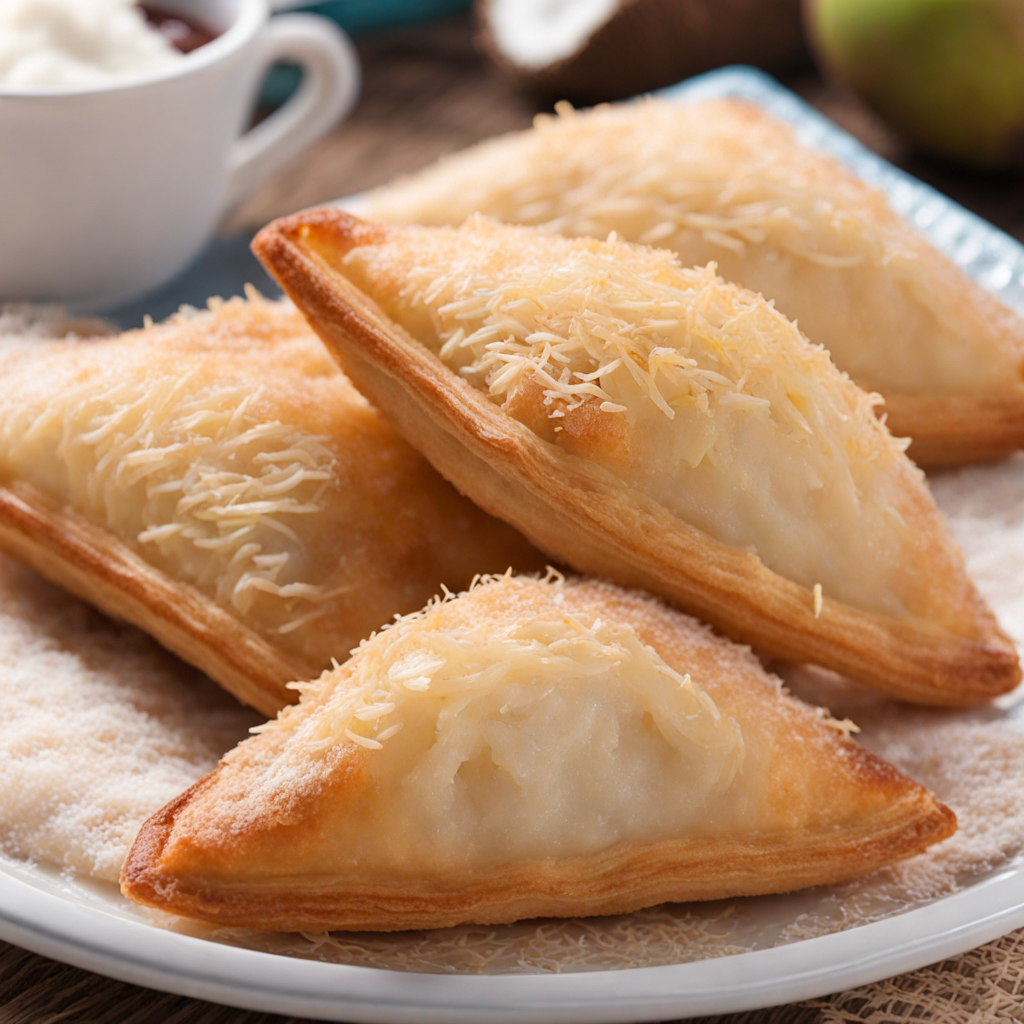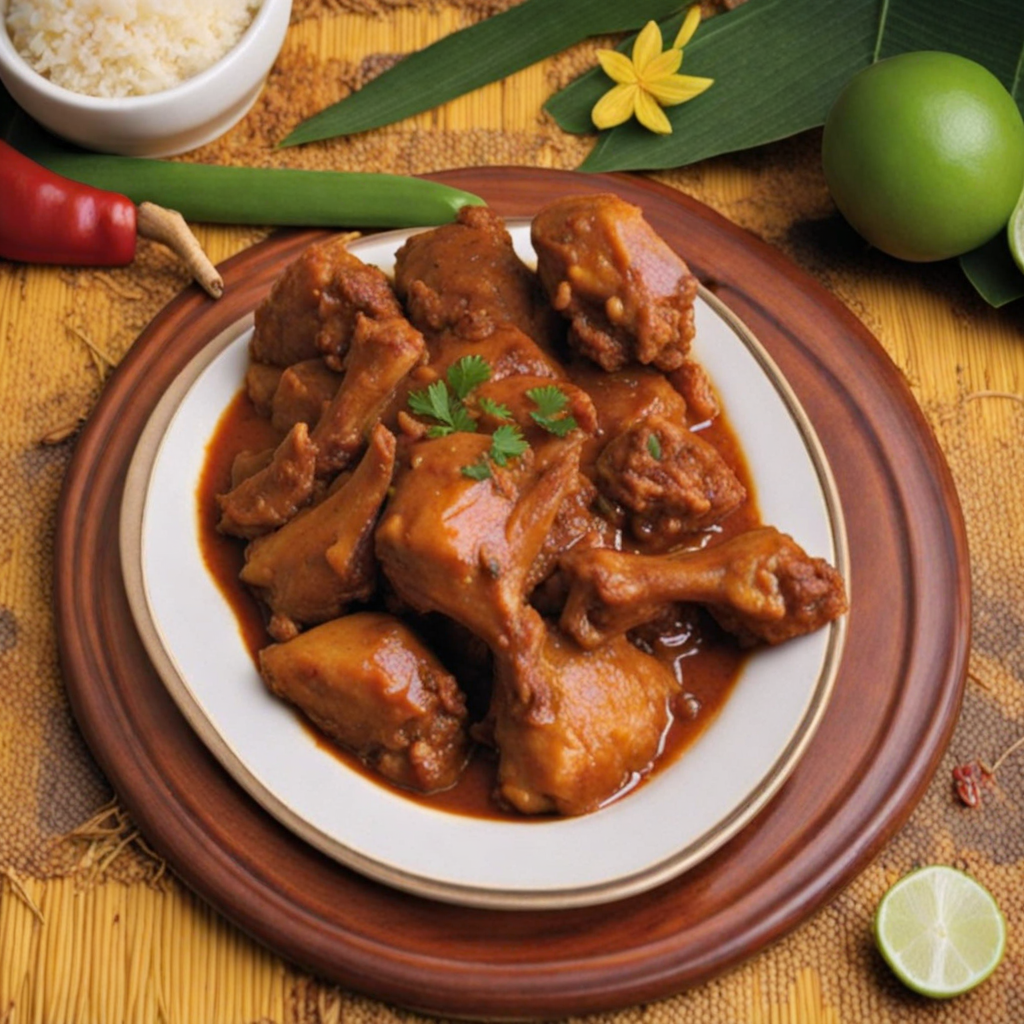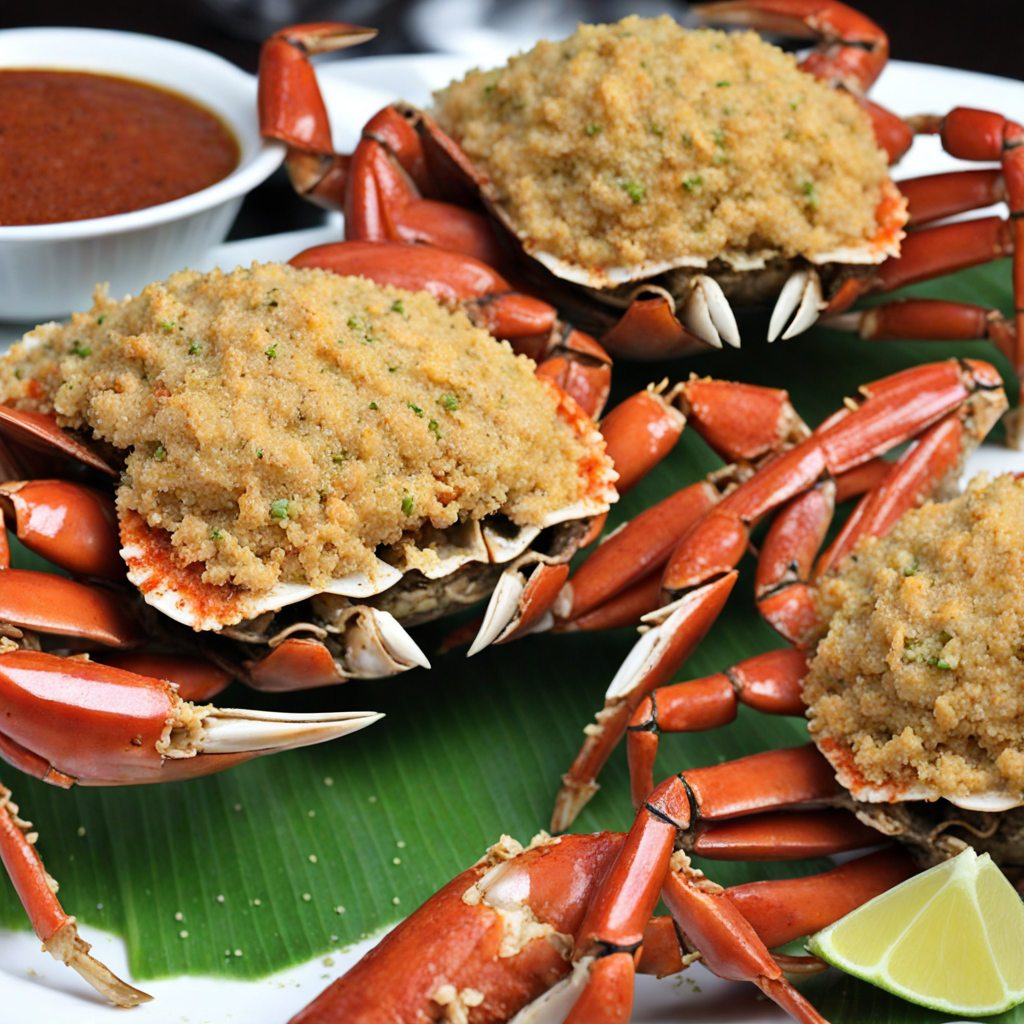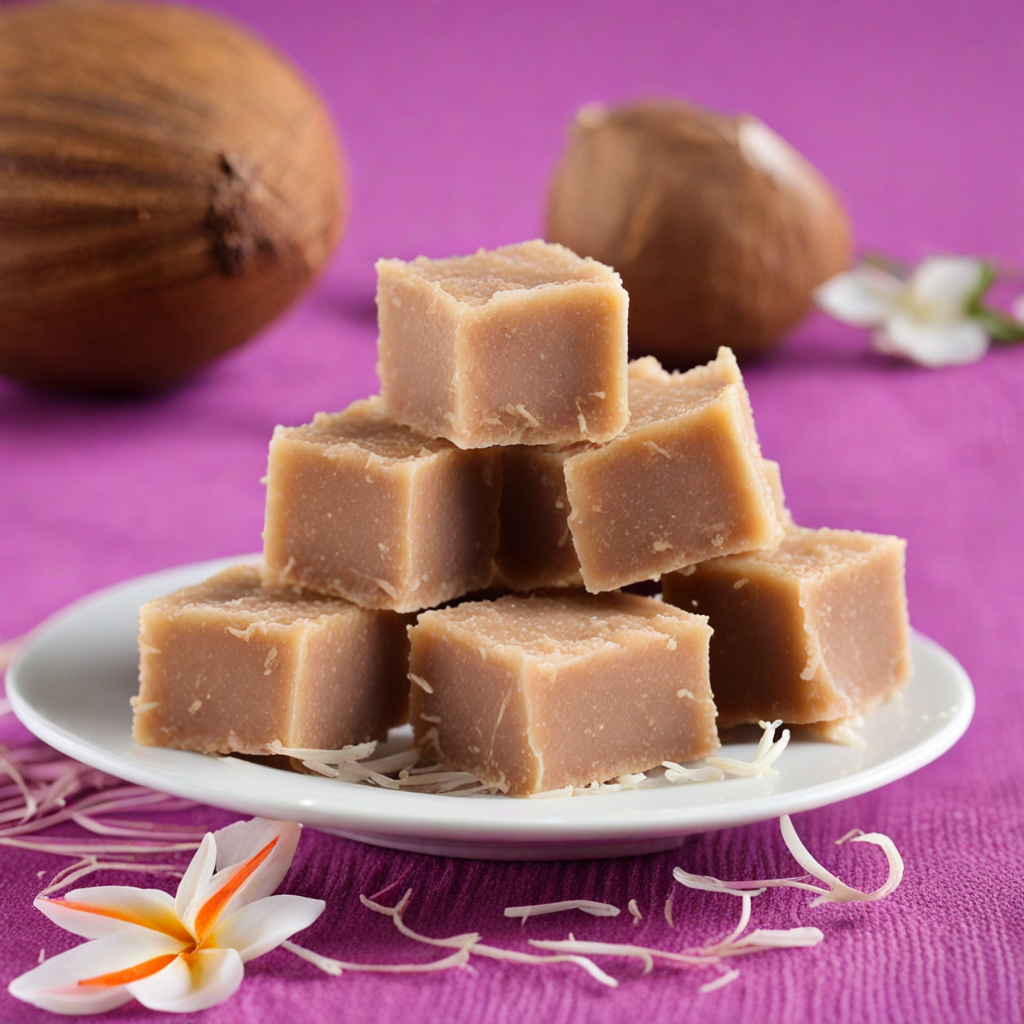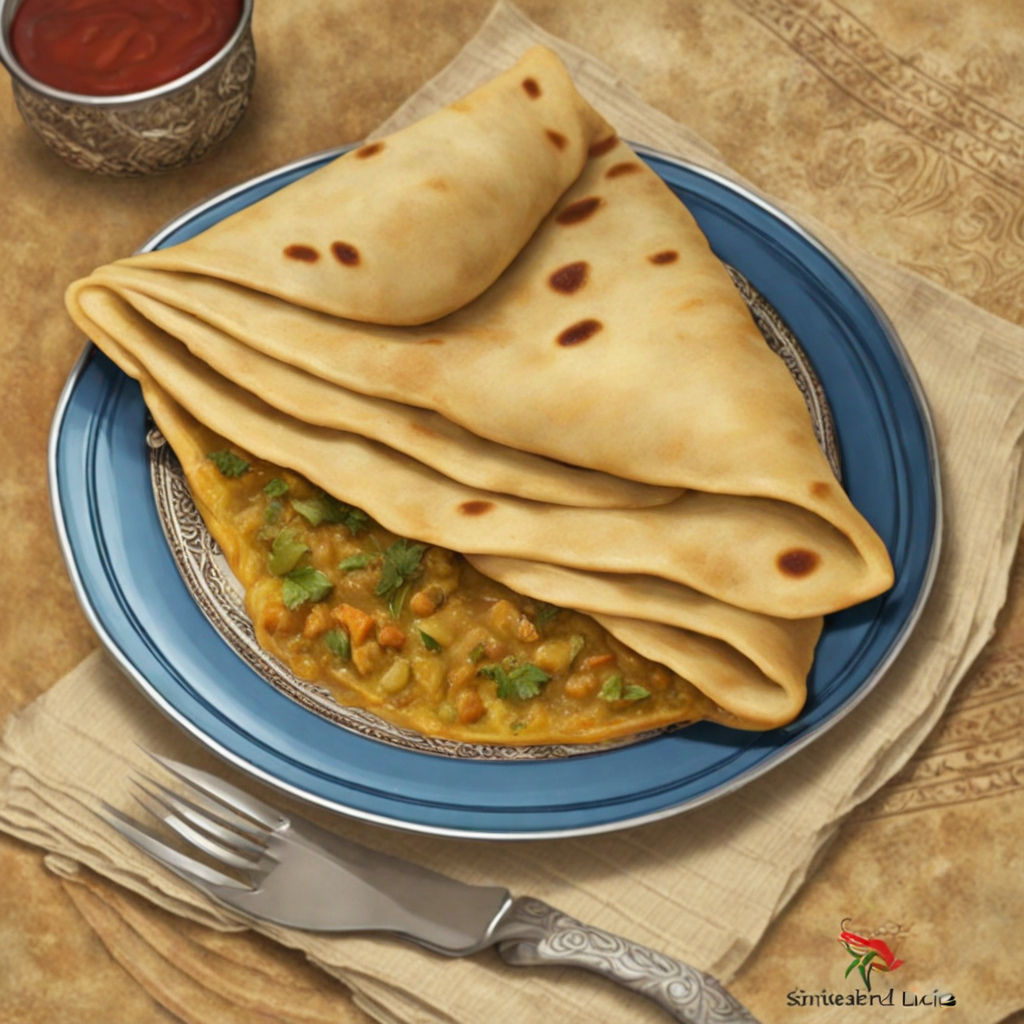Coconut Turnover
Coconut Turnover is a delightful pastry that encapsulates the essence of Saint Lucian cuisine. This treat features a flaky, buttery crust that cradles a sweet and aromatic filling made primarily from freshly grated coconut. The dough is often infused with a hint of vanilla, contributing to its rich flavor profile. The use of local ingredients, such as coconut and spices, makes this pastry a true representation of the island's culinary heritage, connecting you to the tropical paradise with every bite. As you sink your teeth into a Coconut Turnover, the first sensation is the satisfying crunch of the golden-brown pastry, giving way to the tender, moist filling inside. The grated coconut, combined with sugar and a sprinkle of nutmeg or cinnamon, creates a harmonious blend of sweetness and warmth. Each turnover is generously packed, ensuring that the tropical flavors are abundant and satisfying. The balance between the crispy exterior and the soft interior makes this dish an irresistible treat for both locals and visitors alike. This pastry is often enjoyed as a snack or dessert, making it a versatile addition to any meal. Whether paired with a cup of local coffee or savored on its own, Coconut Turnover provides a unique taste experience that transports you to the vibrant landscapes of Saint Lucia. Its simplicity, combined with the richness of coconut, highlights the island's commitment to using fresh, natural ingredients, making it a must-try for anyone looking to explore the diverse flavors of Caribbean cuisine.
How It Became This Dish
The History of Coconut Turnover in Saint Lucia The Coconut Turnover is a beloved treat in Saint Lucia, a small island nation nestled in the Caribbean. Known for its rich culinary heritage, Saint Lucia has a diverse food culture influenced by its indigenous peoples, European colonizers, and the African diaspora. The Coconut Turnover, with its flaky pastry and sweet coconut filling, is not only a popular snack but also a symbol of the island's vibrant history and the fusion of its diverse cultures. #### Origins The origins of the Coconut Turnover can be traced back to the indigenous peoples of the Caribbean, particularly the Arawaks and Caribs, who were the first inhabitants of Saint Lucia. These early inhabitants relied heavily on the natural resources available to them, including coconuts. They would use coconuts not only as a source of food but also for oil and fibers. The coconut tree, often referred to as the "tree of life," played an integral role in their diet and daily life. As European colonization began in the late 15th century, the culinary landscape of Saint Lucia started to evolve. The Spanish, French, and British brought with them new ingredients, cooking techniques, and culinary traditions. The French, in particular, had a significant influence on Saint Lucian cuisine, introducing pastries and baked goods that would eventually lead to the creation of the Coconut Turnover. The combination of European pastry-making techniques and the indigenous use of coconut set the stage for this delightful treat. The Coconut Turnover, which combines a flaky pastry shell with a sweet coconut filling, embodies this fusion of cultures. The evolution of the turnover can be attributed to the creativity of local cooks who adapted European recipes to incorporate the abundant coconut found on the island. #### Cultural Significance In Saint Lucia, food is more than sustenance; it is a way of life, a means of celebrating community, and an expression of cultural identity. The Coconut Turnover has become a staple in local cuisine, often enjoyed during festive occasions, family gatherings, or as a popular street food. It represents not just a delicious treat but also a connection to the island's history and heritage. The turnover is particularly significant during traditional celebrations, such as the annual Saint Lucia Carnival, where food plays a central role in the festivities. Vendors line the streets, selling a variety of local delicacies, with Coconut Turnovers often taking center stage. The sweet aroma of freshly baked turnovers wafts through the air, drawing people in and creating a sense of community among festival-goers. Moreover, the Coconut Turnover is often made during family gatherings and special occasions, symbolizing hospitality and the importance of sharing food with loved ones. The act of preparing these turnovers can be a communal experience, with family members coming together to create the dough and fill it with sweetened coconut. This tradition fosters a sense of belonging and continuity, as recipes are passed down through generations. #### Development Over Time As Saint Lucia has evolved, so too has the Coconut Turnover. In the early days, the turnovers were likely made with simple ingredients: flour, water, and grated coconut mixed with sugar. However, as the island's culinary scene developed, so did the recipes and techniques used to create these delights. In the mid-20th century, the introduction of modern conveniences, such as pre-packaged ingredients and kitchen appliances, altered the way Coconut Turnovers were prepared. While some traditionalists still adhere to the time-honored methods of making the dough from scratch, others have embraced shortcuts that allow for quicker preparation without sacrificing flavor. This evolution is a reflection of the changing lifestyles of Saint Lucians, who are balancing the demands of modern life with their rich culinary traditions. In recent years, the Coconut Turnover has gained popularity beyond the borders of Saint Lucia. The global interest in Caribbean cuisine and culinary tourism has brought attention to this delectable treat. Tourists visiting Saint Lucia are often eager to sample local delicacies, and Coconut Turnovers are frequently highlighted in food tours and cooking classes. This exposure has encouraged local bakers and chefs to innovate and explore new variations of the classic turnover, incorporating ingredients such as chocolate, spices, or even tropical fruits like mango and pineapple. Coconut Turnovers have also found their way into the world of social media, with food bloggers and influencers showcasing the treat in visually appealing ways. The vibrant colors and textures of the turnovers have made them a popular subject for Instagram posts, further promoting Saint Lucian cuisine to a broader audience. This newfound visibility has led to an increased appreciation for the cultural significance of the Coconut Turnover and its place within the culinary narrative of the Caribbean. #### Conclusion The Coconut Turnover is more than just a delicious pastry; it is a culinary emblem of Saint Lucia's rich history and cultural tapestry. From its indigenous roots to its evolution through colonization and modern influences, the turnover has adapted and thrived, reflecting the resilience and creativity of the island's people. As it continues to be enjoyed in homes, at celebrations, and by visitors to the island, the Coconut Turnover stands as a testament to the enduring legacy of Saint Lucian cuisine—a delicious reminder of the island's vibrant past and its hopeful future. In a world where food often serves as a bridge between cultures, the Coconut Turnover exemplifies the beauty of culinary fusion, inviting everyone to savor a piece of Saint Lucia's history, one flaky, sweet bite at a time.
You may like
Discover local flavors from Saint Lucia


